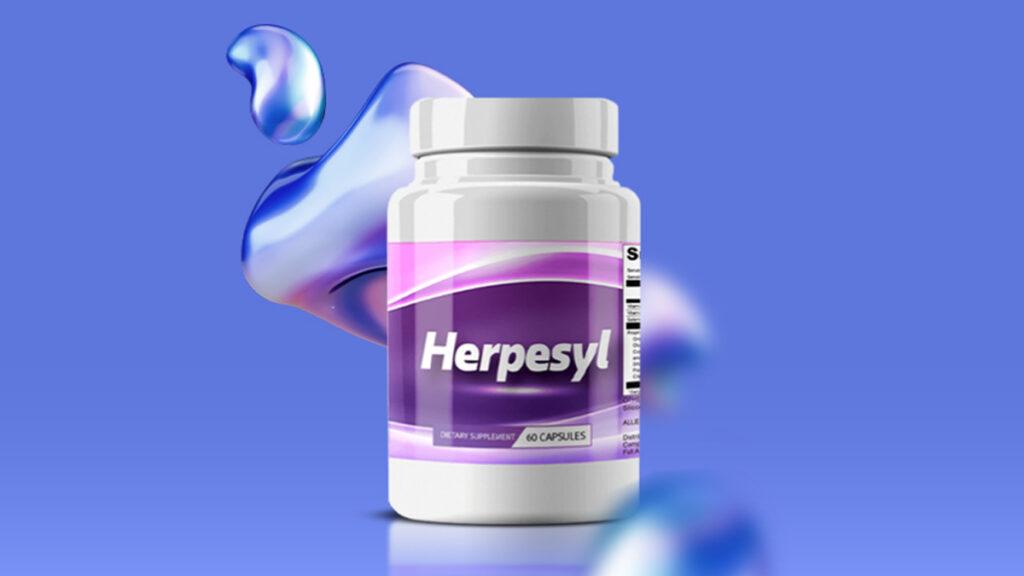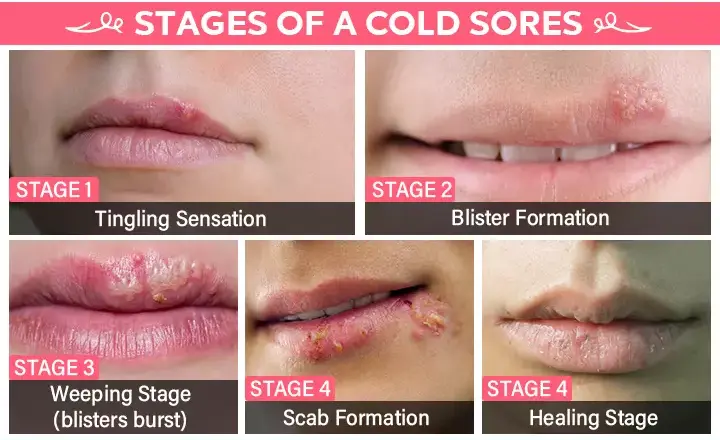What Is Herpesyl ?
Herpesyl is a 100% Natural Formula that Targets the Real Cause of Cold Cores
It is the Ideal Combination of 26 Mixed Plants and Vitamins into a capsule.
Herpesyl is Manufactured in an FDA approved Facility Using the Latest Technology and Equipment.
The main characteristics of this natural formula are that it is:
Non-GMO
Safe
Diabetic Friendly
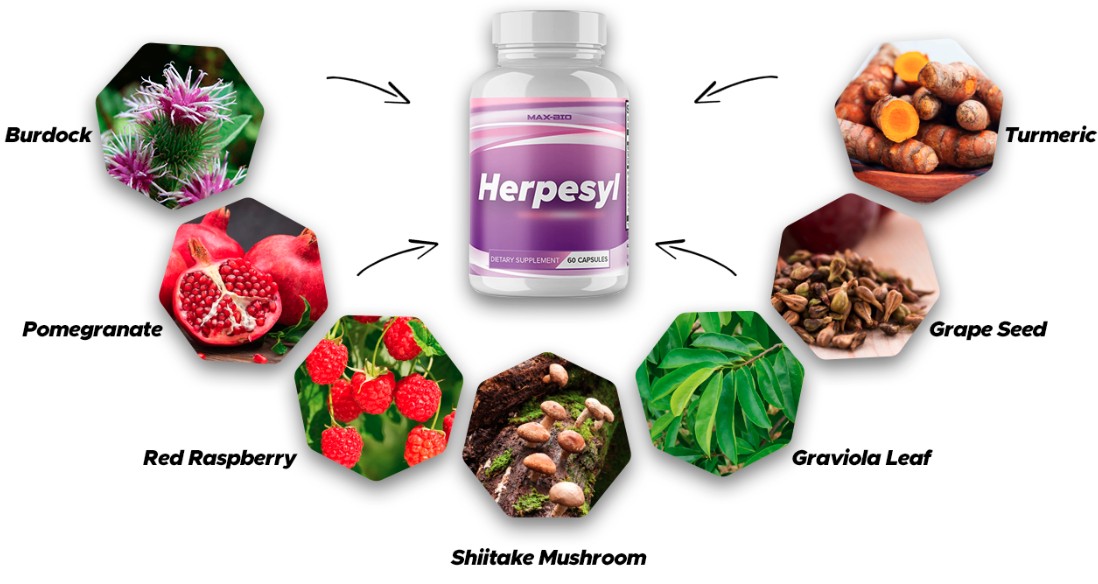

Herpesyl is an all-natural supplement designed to fight cold sores and to help prevent future outbreaks. It is a daily oral supplement comprised of various vitamins, minerals, and herbal extracts that have been clinically proven to have powerful antiviral benefits, some of which specifically target HSV-1 and HSV-2 herpes viruses.
In general, Herpesyl provides your body with anti-inflammatory and anti-viral compounds that provide and support your body in suppressing cold sores.
Unlike prescription drugs, it does not use any chemicals or drug ingredients to suppress cold sores.
“I have been using Herpesyl for a few months now, and I am amazed at the results. My outbreaks have significantly decreased, and I feel more energized and focused. It’s truly a game-changer.”

Mike Lasko
-New York, USA
“After struggling with frequent herpes outbreaks, I decided to give Herpesyl a try. I am so glad I did! Not only have my outbreaks become less frequent, but I also feel healthier overall. I highly recommend Herpesyl to anyone dealing with herpes.”
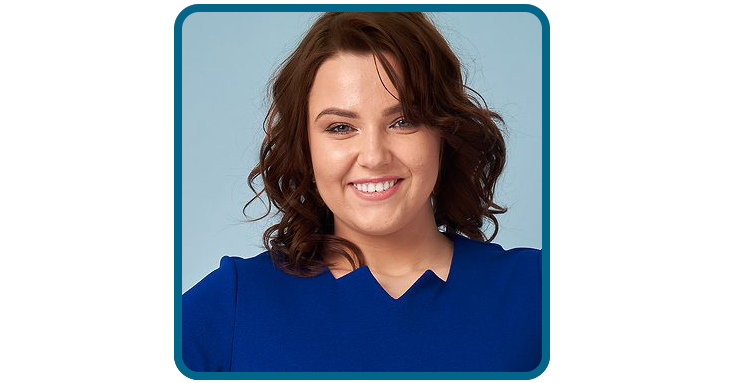
Christina Mauerer
-Toronto, Canada
“I was skeptical at first, but Herpesyl has exceeded my expectations. My outbreaks are now rare, and I feel like myself again. Thank you, Herpesyl!”
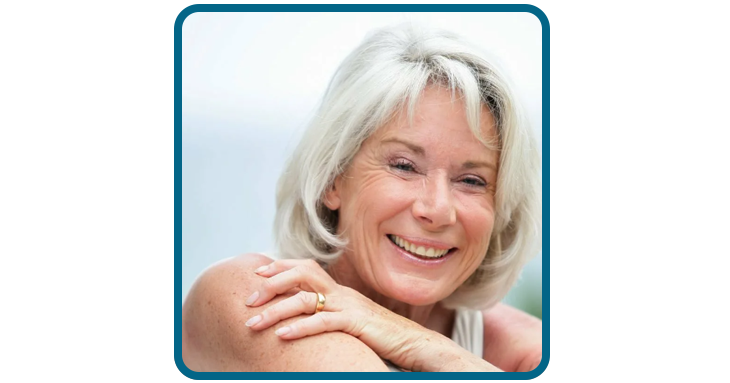
Emily. - Chicago, USA
1 BOTTLE
- 60 Day Money Back Guarantee
- Regular Price $99
- Small Shipping Fee
30 DAY SUPPLY
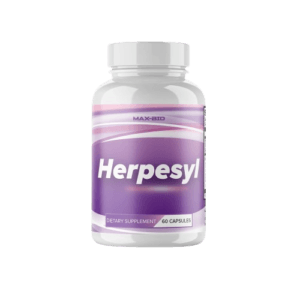
3 BOTTLES
- 60 Day Money Back Guarantee
- You Save $120
- Two Free eBooks and Free Shipping
90 DAY SUPPLY
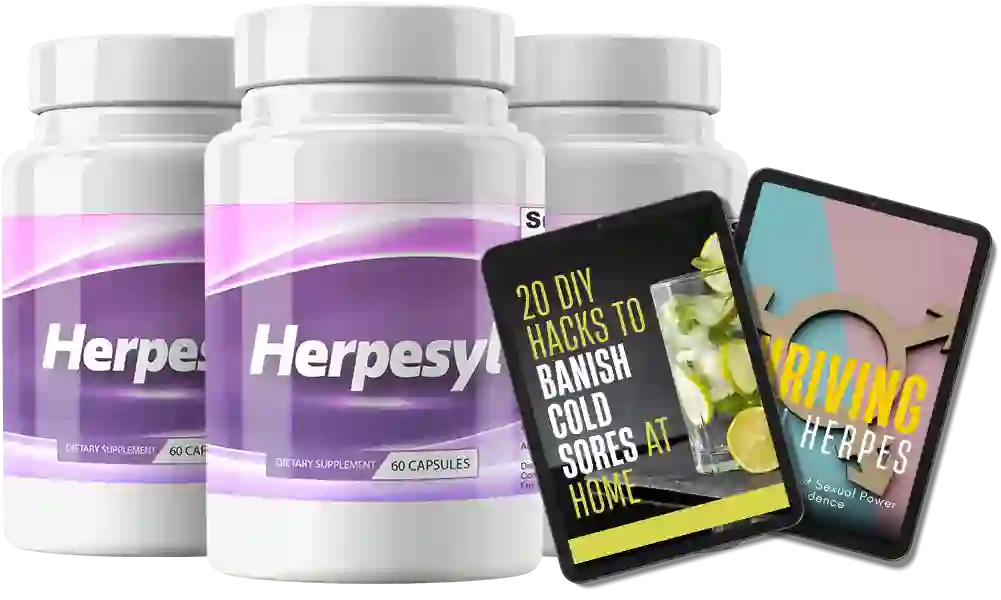
6 BOTTLES
- 60 Day Money Back Guarantee
- You Save $300
- Two Free eBooks and Free Shipping
180 DAY SUPPLY
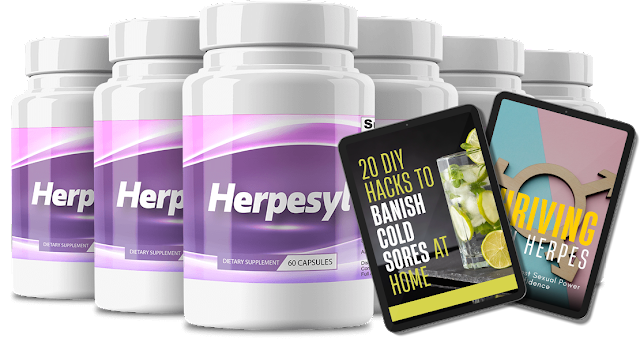


HOW TO TREAT COLD SORES
Cold sores are an outbreak of the herpes simplex virus (HSV). They are small blisters, often in a cluster, that usually develop on the lip or around the mouth.1 These often-painful, fluid-filled blisters can be a real annoyance, but the good news is that there are plenty of things you can do to treat a cold sore and promote healing. Let’s take a closer look at how to treat a cold sore.
Your Best Defense is a Good Offense
A day or two before you get a cold sore, you’re likely to experience a sensation on the skin where the blisters are going to appear. These sensations may include burning, itching, stinging, tingling or throbbing.2 At this first sign of an oncoming cold sore, be sure to apply getting good sleep and regularly exercising. Explore Managing Your Triggers collection to find out more about what your cold sore triggers may be and how to best stay ahead of the tingle.
Self-Care
Learning how to best treat a cold sore involves two main components: how you take care of yourself and how to protect others. Here we will explore some of the best ways to look after yourself when you are having a cold sore outbreak.3
- Take Herpesyl. As stated above, you should take Herpesyl at the first sign of symptoms. Herpesyl® starts to work immediately** to help block the virus and protect healthy skin cells.
- Lessen Pain. In order to lessen the pain of a cold sore, consider placing ice on the cold sore or sucking on ice chips. This can help lessen pain as well as burning and itching sensations. You can also take over-the-counter pain medicines ibuprofen or acetaminophen to help manage the pain associated with cold sores.
- Avoid Acidic Foods. Food such as tomatoes or citrus fruits, like oranges or grapefruits, contain acid and can irritate your cold sore. Avoid eating acidic foods while you have a cold sore. Avoiding foods that are spicy or salty may also help.
- Use a Cold Compress. Apply a clean, cold, wet towel to the cold sore for five to ten minutes a few times throughout the day.
- Avoid Dry, Cracked Skin. Gently apply petroleum jelly to the cold sores and the surrounding skin to help moisturize the area.
Caring for Others
The other big component of learning how to treat cold sores has to do with how you interact with your environment around you to minimize the risk of spreading HSV. Cold sores are contagious from the moment you first feel the tingle until they are completely healed.4 To help protect those around you, focus on doing the following as you treat your cold sore.5
- Don’t Kiss Anyone. Kissing is a major way that HSV is transmitted from person to person. Avoid kissing anyone from the moment you first experience symptoms until the cold sore is completely healed.
- Don’t Share Items. Avoid sharing any items that may have come in contact with your cold sore. Try not to share items such as cold sore creams, towels, cutlery or lipstick when you are experiencing symptoms.
- Don’t have oral sex. You could potentially give your partner genital herpes if you engage in oral sex before your cold sore is completely healed.
- Don’t touch your cold sore. Other than keeping the area clean, you should avoid touching it altogether. Touching your cold sore and then touching other areas of your boy or other surfaces can spread HSV. If, for some reason, you do have to touch your cold sore, be sure to wash your hands immediately.
Now that you know how to best treat a cold sore and promote healing, be sure to put these steps into action to help yourself and your loved ones.
*Median healing time 4.1 days. 25 percent of users healed within 2½ days.
**Based on laboratory data.
SOURCES
1. Cold Sores: Overview. American Academy of Dermatology Association. https://www.aad.org/public/diseases/a-z/cold-sores-overview. Accessed 1/7/21. Referenced text is highlighted in source PDF.
2. Cold Sores: Signs and Symptoms. American Academy of Dermatology Association. https://www.aad.org/public/diseases/a-z/cold-sores-symptoms. Accessed 1/7/21. Referenced text is highlighted in source PDF.
3. Cold Sores: Tips for Managing. https://www.aad.org/public/diseases/a-z/cold-sores-self-care. Accessed 1/7/21. Referenced text is highlighted in source PDF.
4. Cold Sores. National Health Service. https://www.nhs.uk/conditions/cold-sores/. Accessed 1/7/21. Referenced text is highlighted in source PDF.
5. Cold Sores. National Health Service. https://www.nhs.uk/conditions/cold-sores/. Accessed 1/7/21. Referenced text is highlighted in source PDF.
FOOD AND DRUG ADMINISTRATION (FDA) DISCLOSURE
The statements made regarding these products have not been evaluated by the Food and Drug Administration. The efficacy of these products has not been confirmed by FDA-approved research. These products are not intended to diagnose, treat, cure or prevent any disease. All information presented here is not meant as a substitute for or alternative to information from health care practitioners. Please consult your health care professional about potential interactions or other possible complications before using any product. The Federal Food, Drug and Cosmetic Act requires this notice.
